Mission Impossible?
Roger Deakins CBE BSC ASC / 1917

Mission Impossible?
Roger Deakins CBE BSC ASC / 1917
Images: Courtesy of DreamWorks Pictures and Universal Pictures.
Behind the Scenes photos: Francois Duhamel - courtesy of DreamWorks Pictures and Universal Pictures.
During the First World War, two young British soldiers are given what seems an impossible mission: to deliver a message deep into enemy territory that will stop 1,600 of their comrades, including one of the soldiers' brothers, from falling into a deadly trap. And so, with this grave undertaking, the non-stop race against time, in Universal Pictures' $90m action drama, 1917, is set in motion.
The film, helmed by director Sam Mendes, earned a host of nominations during the 2020 awards season, including Oscar, BAFTA and ASC nods for its cinematographer Roger Deakins BCE BSC ASC, who was charged with lensing every step of the young soldiers' dramatic journey as one continuous shot. 1917 is Deakins' fourth collaboration with Mendes, following his work on Jarhead (2005), Revolutionary Road (2008) and Skyfall (2012).
Co-written by Mendes and Krysty Wilson-Cairns, 1917 is based in-part on an account told to the director by his paternal grandfather, Alfred Mendes. Its star cast includes George MacKay (Lance Cpl. Schofield), Dean-Charles Chapman (Lance Cpl. Blake), Andrew Scott, Richard Madden, Benedict Cumberbatch and Colin Firth.
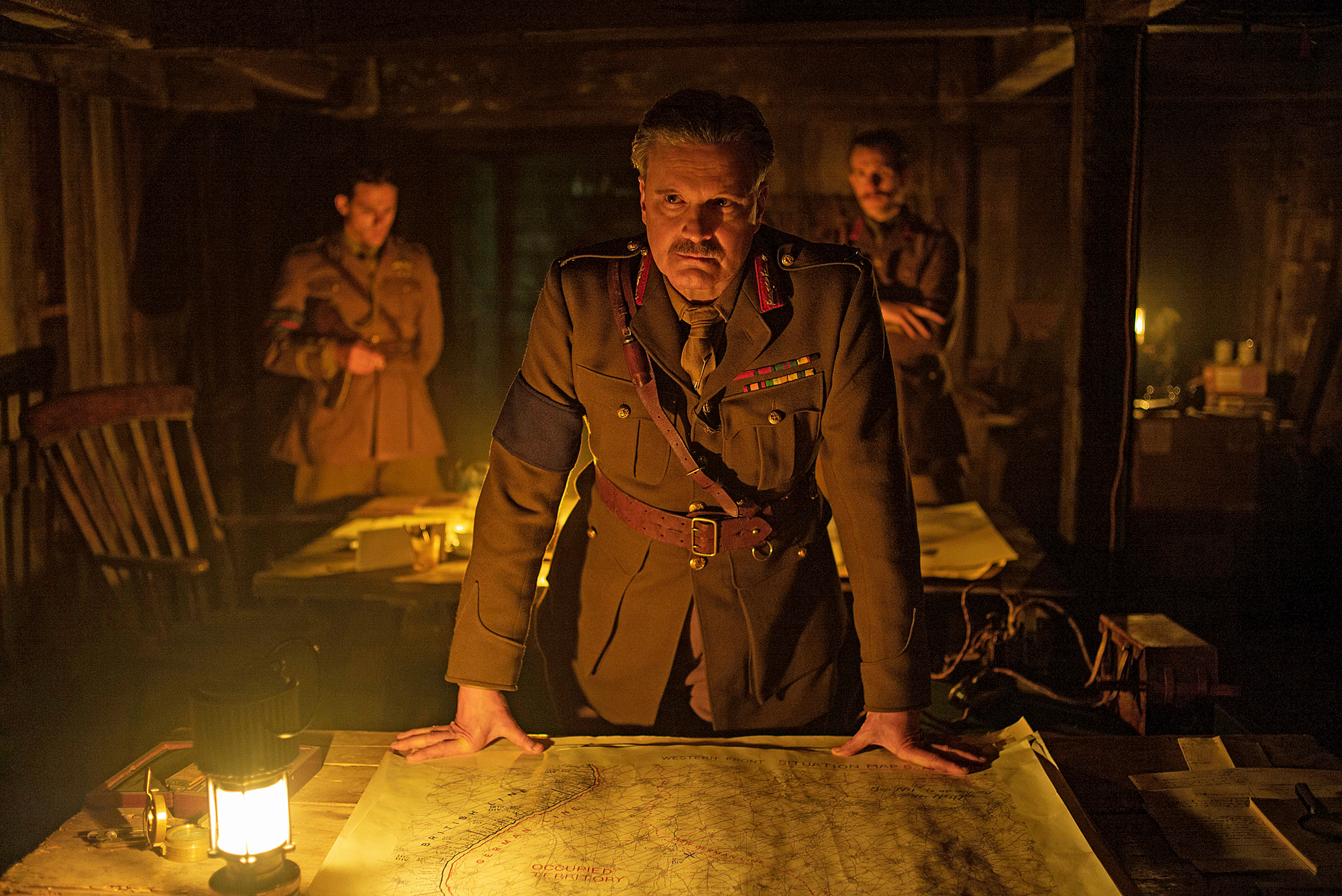
Across the film's 110-minutes, audiences are taken on the young soldier's thrilling nine-mile journey - around the maze-like trenches of the wartime front, the quagmire of No Man's Land, through a war-ravaged town, and along a gushing river - before the dramatic denouement.
Whilst the result looks seamless, behind-the-scenes the camera team found themselves handing camera rigs to one another, variously hooking them onto wires, cranes, drones and tracking vehicles, across an array of exterior and interior locations often hundreds of miles apart - but only when the weather was conducive.
"All films require collaboration, but this was a more fine-tuned ballet than most, with the crew, cameras and mechanics all needing to be in-sync with what the actors were doing," says Deakins. "Achieving that was a beautiful and exhilarating experience."
Principal photography on 1917 began on 1st April 2019 and concluded 64 shooting days later in early September. Locations included: the backlot of Shepperton Studios where the set of the bombed-out town of Écoust-Saint-Mein was constructed; the UK military training grounds of Salisbury Plain, Wiltshire, and Bovingdon Airfield, Oxfordshire, which were used for the movie's various trench sequences; a shipyard on the River Clyde in Glasgow for Schofield's entry to the town across a broken bridge; and the Low Force rapids on the River Tees, County Durham, for the movie's waterborne sequences. Interiors sets, including General Erinmore's bunker and an abandoned German bunker, were constructed at Shepperton.
Ron Prince caught up with the cinematographer to discover more about his wonder work in making the single-shot epic drama.
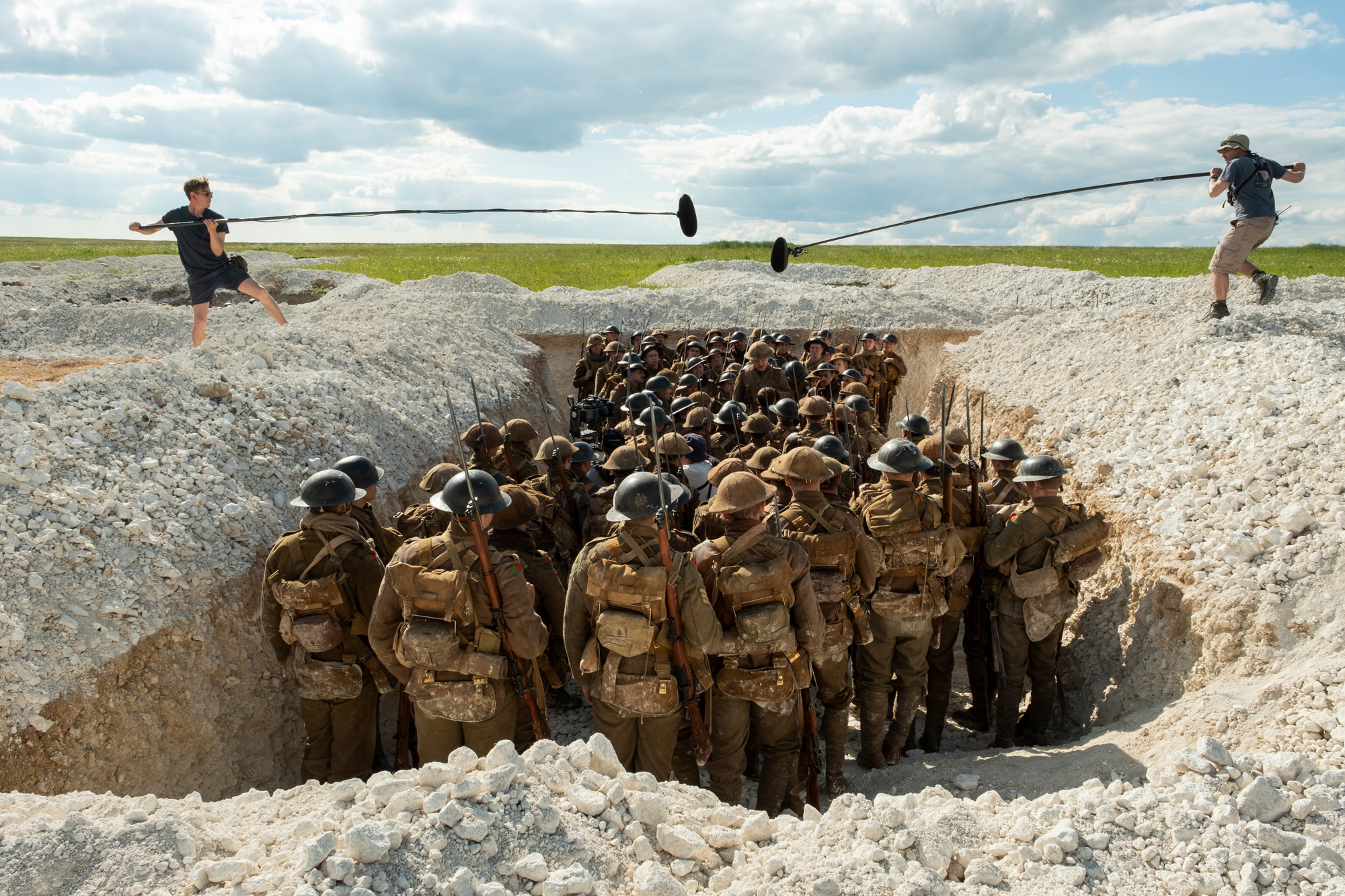
It's hard to spot the joins, so how many transitions are there in the film?
RD: I don't really want to give that away, but if you study the film there are quite a few transitions that are pretty obvious, as they were simple, no-brainers. Others were more complicated and some happen right in the middle of an action, but they were made invisible by VFX or other treatments in post.
When did Sam Mendes spill-the-beans to you about the film?
RD: It was whilst I was working on The Goldfinch (dir. Jon Crowley). Sam called up out-of-the-blue and asked whether he could send me a script for a film called 1917. But he didn't tell me much else about it. On the front page it said, "This is envisioned as a single shot," and I actually thought it to be some sort of mistake, some sort of writer's flourish. But, reading the script made sense of what Sam was really thinking about.
What did you think about 1917 being created as a single, continuous shot?
RD: I was really concerned. I sometimes think it's just a gimmick and question why would you want to do a film that way? Filmmaking has always been about cuts, time jumps and the juxtaposition of ideas. But Sam's story really lent itself to the idea of being one single shot. As the story follows the two characters, I could see and feel the intimacy of being with them. So the concept made total sense.
Did you have any reservations about whether it could actually be done as a single shot?
RD: Yes, absolutely, but I like a challenge. When we started talking early-on about 1917, and sketching-out ideas, we deliberately said we would not think about how we would do it technically. Rather that we would think about how we wanted to stage the action and what we wanted the audience to see. The technical aspects of how to do it came much later on.
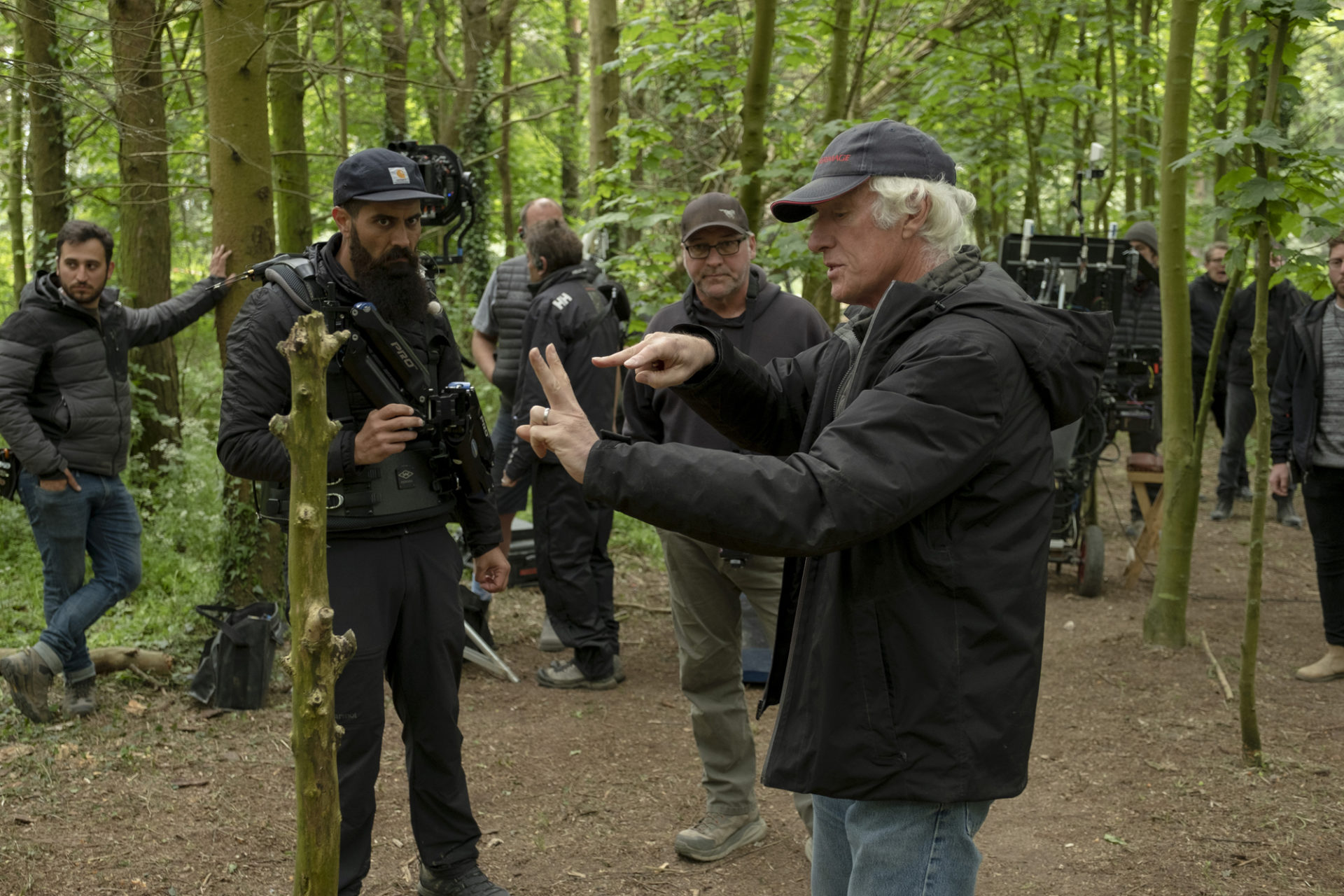
Did you reference other films that have been done, or appear to have been done, in a single take?
RD: There are quite a few of films that have been done this way, like Russian Ark (2002, dir. Alexander Sokurov, DP Tilman Büttner), Birdman or (The Unexpected Virtue of Ignorance) (2014, dir. Alejandro G. Iñárritu, DP Emmanuel Lubezki AMC ASC) and Victoria (2015, dir. Sebastian Schipper, DP Sturla Brandth Grøvlen).
I had seen these movies before, but we did not watch them deliberately in relation to our film. However, in pre-production, I did refresh my memory of Come And See (1985, dir. Elem Klimov, DP Aleksei Rodionov), as there are some quite long takes in that film involved some of the first uses of Steadicam, if I remember correctly.
Did you shoot 1917 in a linear fashion, as the story unfolds on-screen?
RD: Yes, we shot in story order as much as we could, although we didn't begin with the opening shot, as production actually started at Bovingdon Airfield with the trench work.
As much as anything, Sam wanted to shoot in order, so that he could feel the flow of the film as we went along. Editor Lee Smith cut the takes together as we shot, and Sam was able to watch the evolving edit to gauge the pacing. After four of five weeks we had a screening of around 20 minutes of the film as it was by then, which gave Sam a really good sense of where things were going.
We had to be very careful with the transitions between takes, as the end and starts had to match exactly. Sam had to pick the take he wanted before we moved on to the next shot.
When we changed locations we had playback of the hero take from the previous location and it was crucial that everything - like the actors' positions, their distance from the lens, and the speed of the camera movement - was set up to match exactly. We tried to get everything as close as we possibly could.
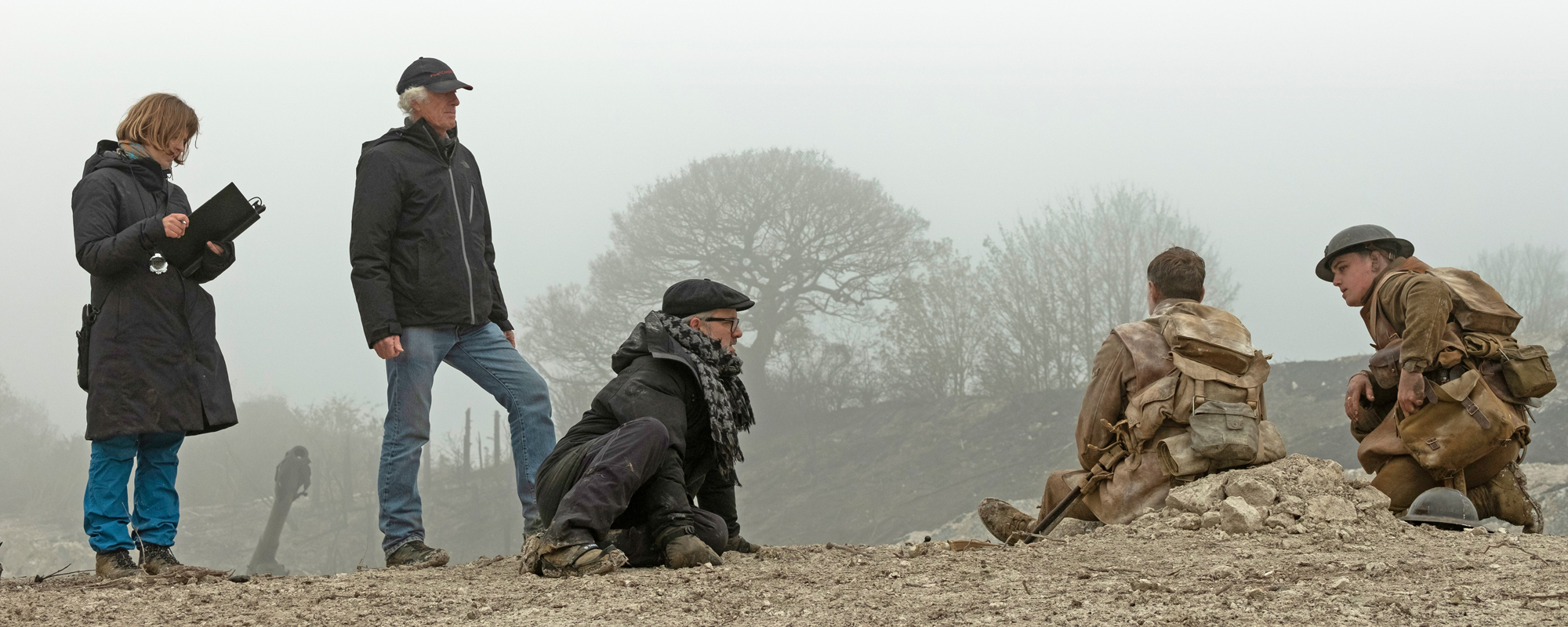
"The weight of the Signature Primes was crucial as we needed a lightweight camera package for the various stabilising systems were using. Plus, they are fast and sharp, and there's absolutely no breathing when you pull focus. I hate it when the image shifts when you change focus."
- Roger Deakins on using Signature Prime lenses on the shoot
Who were your crew?
RD: My first AC was Andy Harris, who I have worked with since Fargo. His sensibility is second to none and he did some unbelievable focus pulling work on this film.
Peter Cavaciuti was my Steadicam operator, with whom I have also worked on many films, including Kundun, and who is pretty much the best there is. His work inside the German bunker, the walk to the barn and the chase around the town, blew me away. Peter's son, Guido Cavaciuti worked very ably as a first and second AC depending on the shot. Charlie Rizek was our ARRI Trinity Rig operator. He gave us the original demo of the system at ARRI and, although he had never worked on a feature before, he was patently so good with the rig that we asked him to operate it on the film. He operated a great many of the key shots.
My gaffer was Biggles, John Higgins. The first film John and I worked on together was 1984 and we had done numerous music videos way before that. He's a wonderful guy, and a really good friend. Our key grip was Gary Hymns. He and his team were amazing when it came to moving the camera. They had never really done much work in switching the camera between different rigs during the same shot before, but they loved it and did a fantastic job.
During production I worked at the monitor of my regular DIT, Josh Golish, set up in a van parked somewhere between the beginning and end of each set up. I operated much of the film on the StabilEye remote head and Josh, who sat alongside me, pulled stop as I operated.
Once again, my wife James worked with me. She oversaw the digital workflow, was in communication with the grips and camera operators during shooting, wrangled the camera equipment as well as worked out any hiccups in our prototype cameras. She also liaised with our VFX team during shooting and the DI post process, and worked with Company3 to set up a specific workflow for the very different way of working demanded by this production.
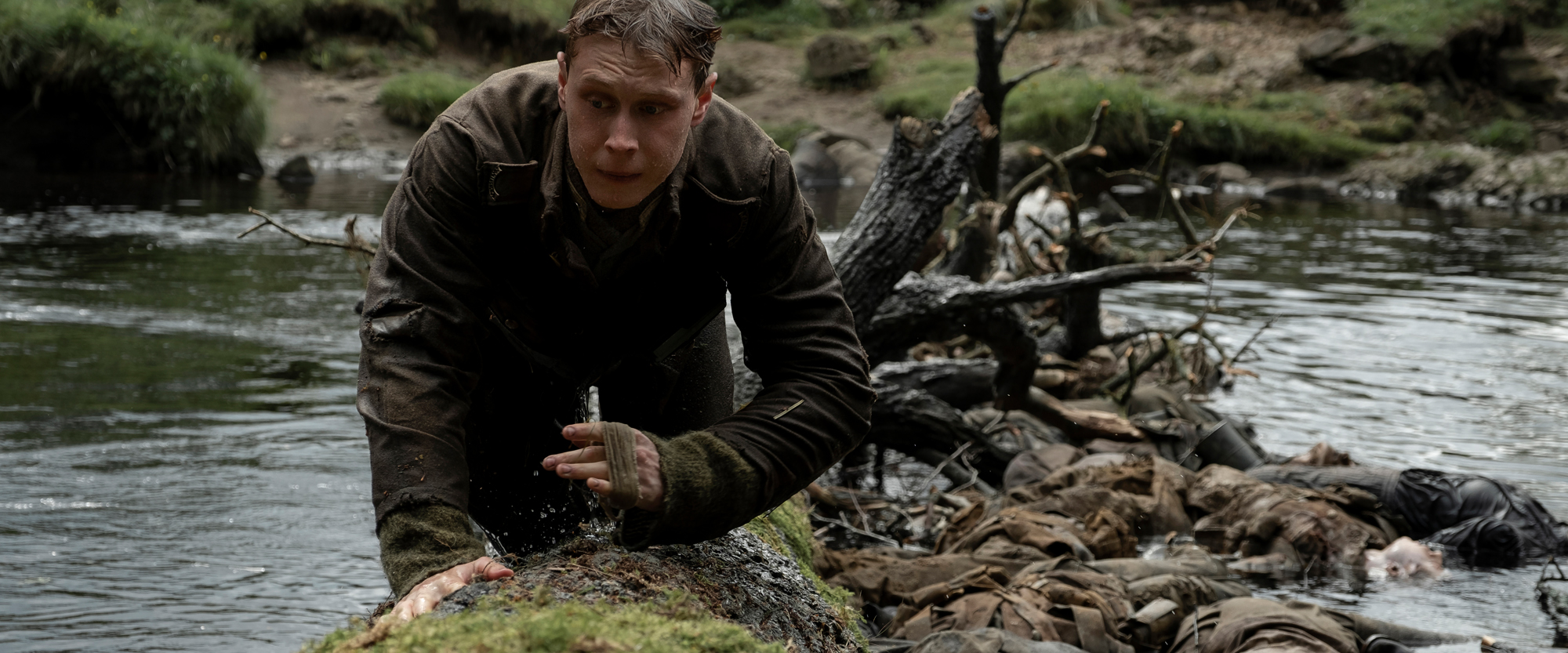
How did you arrive at your choice of camera and lenses?
RD: When Sam and I discussed cameras, during the summer of 2018, he asked whether there was anything with a higher resolution than the standard format ARRI Alexa that we had used before. For my part, I really wanted 1917 to have the feeling of slightly shallow depth-of-field in the image that you get from a larger format sensor.
I had tested the 4.5K ARRI Alexa LF and although I really liked it, I had never used it before. I also knew it would be too big in size for the manoeuvres we intended on our lengthy exterior and interior locations.
So, in August, James and I approached Franz Kraus at ARRI, who we have known for many years, and asked if ARRI intended on making a smaller version of the Alexa LF. He said they had it in mind, but not immediately. We asked if they could have three ready by February 2019, and they came back to us with a guarantee of three prototypes of the Alexa LF Mini by the time we came to shoot.
It's a great little camera that a lot of people are now using, although it was still being developed and upgraded when we shot. During production, I rated the camera at 800ASA, except for the night work, some of which I rated it at 1600ASA.
As for the lenses, we used ARRI Signature Primes and shot almost everything on a 40mm - except for the interior of the abandoned German bunker, when we used a 35mm to give the feeling of the confined space, and the river work, some of which we shot using a 47mm as I didn't want so much of the background in the image.
These lenses give you that little bit more fall-off in the image, but you still retain a slightly wider field-of-view, than you get from the corresponding focal lengths on a camera with a smaller sensor. The weight of the Signature Primes was crucial as we needed a lightweight camera package for the various stabilising systems were using. Plus, they are fast and sharp, and there's absolutely no breathing when you pull focus. I hate it when the image shifts when you change focus.
Did you apply any specific LUTs or tweak the image on-set?
RD: Not really. I employed the same LUT that I have been using since I started shooting digitally. I just use the one LUT and do any variations of look through the lighting and exposure. I may have changed the colour temperature by a few degrees on the odd occasion, but nothing dramatic. I prefer to keep the image as it is on-set, and leave any alterations in colour until the DI.
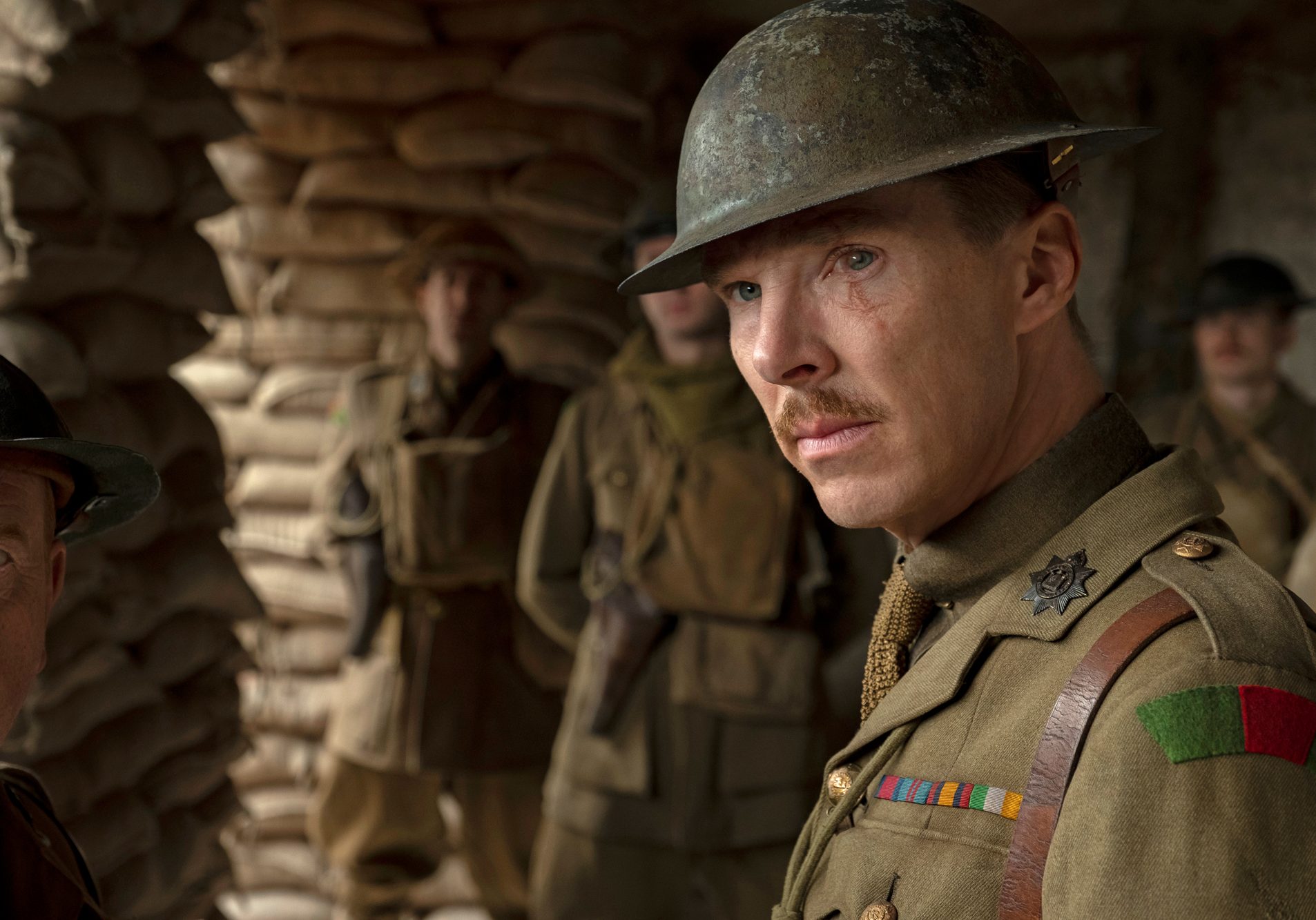
"We spent a lot of time going through all the possible bits of equipment, before eventually whittling things down to three main items: the first was the lightweight StabilEye; then there was the standard Steadicam; and outside of these core systems, we used a wire rig"
- Roger Deakins on the camera-moving systems required
How did you conceive the one, long, seamless camera move for the film?
RD: The concept of the single take was in Sam's head as he wrote the script. One practical consideration we had was where we put the joins, but we also had to consider how we would physically hand the camera from one person, or rig, to the next whilst going through the trenches, up and over walls, or around a building - all with a stable image. So we spent a lot of time going through all the possible bits of equipment, before eventually whittling things down to three main items.
The first was the lightweight StabilEye, the brainchild of Dave Freeth and Paul Legall, which we used in a couple of different ways - either with the grips walking it through the set, or fitted on top of a specially-designed post attached to a Steadicam vest. This contraption allowed Peter to run along a trench with the camera pointing backwards over his shoulder, before stopping and turning 180-degrees to follow the action. It was the only way we found to move the camera down the trenches at speed and get the moves we wanted.
Then there was the standard Steadicam, which Peter also operated, for shots such as the German bunker, and the some of the chase through the devastated town. And the third was the ARRI Trinity Rig, operated by Charlie, which allowed us to achieve both higher and lower camera positions incorporated within the same fluid movement.
Outside of these core systems, we used a wire rig, developed and operated by Gavin Weatherall from The Wire Rig Company at Shepperton, to track through the No Man's Land crater scene and across the canal, as well as camera vehicles with mini Libra heads on different Technocranes, a motorbike and a drone.
How did the camera moves work in practice?
RD: In any one take we would have to switch the camera between different camera-moving systems. For example, when Schofield crosses the broken bridge over the canal, the camera started on the wire rig before being taken off and carried by the grips into the town.
For Schofield's long run beside the trench at the end of the film, the camera moves were a little more complicated. Initially, the camera was on a 50ft Technocrane, which boomed up and out of the trench, before being unhooked by the grips, carried and remounted to a 20ft Technocrane on a moving tracking vehicle, which then accelerated away as the actor started running. In this instance, the first Technocrane retracted out of shot, and the grips who carried the camera to the second crane had to wear full costume as they eventually ended-up being in the background action. At the end of the shot the crane boomed out as Schofield jumps back down into the trench again.
How much rehearsal did you do?
RD: A lot. All of the camera moves and hand-overs required a lot of practice, and that was great fun. Every scene was rehearsed way in advance of production with the actors and crew. At first we rehearsed with stakes in the ground demarking the trenchlines. But as production got closer we took the camera equipment, our key crew members and actors to our locations and mapped the moves and the timings much more precisely. Along with helping the crew, the physicality of practicing over and over again, was beneficial to the actors, as it really allowed them to focus on their performances when we came to shoot for real.
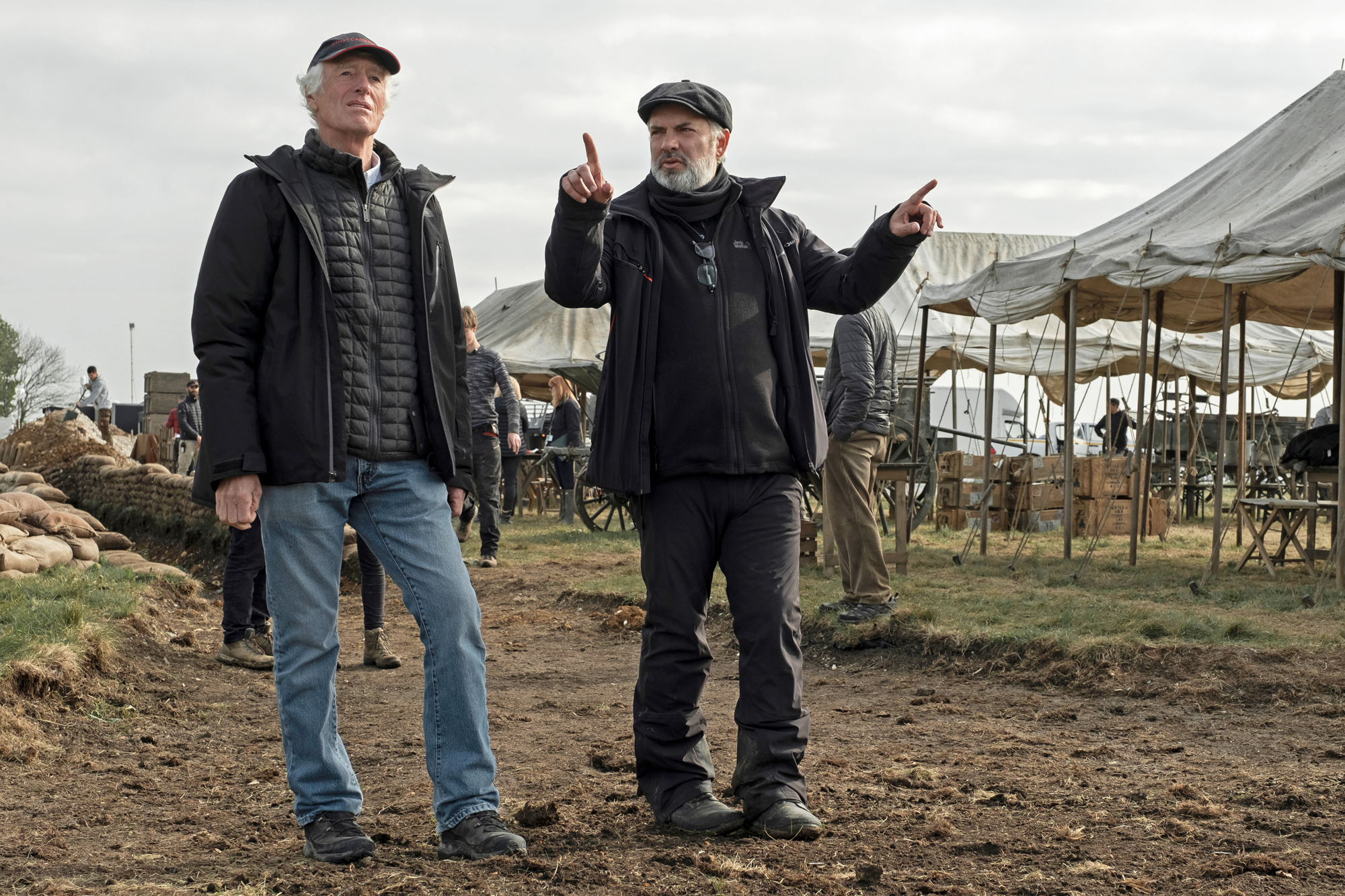
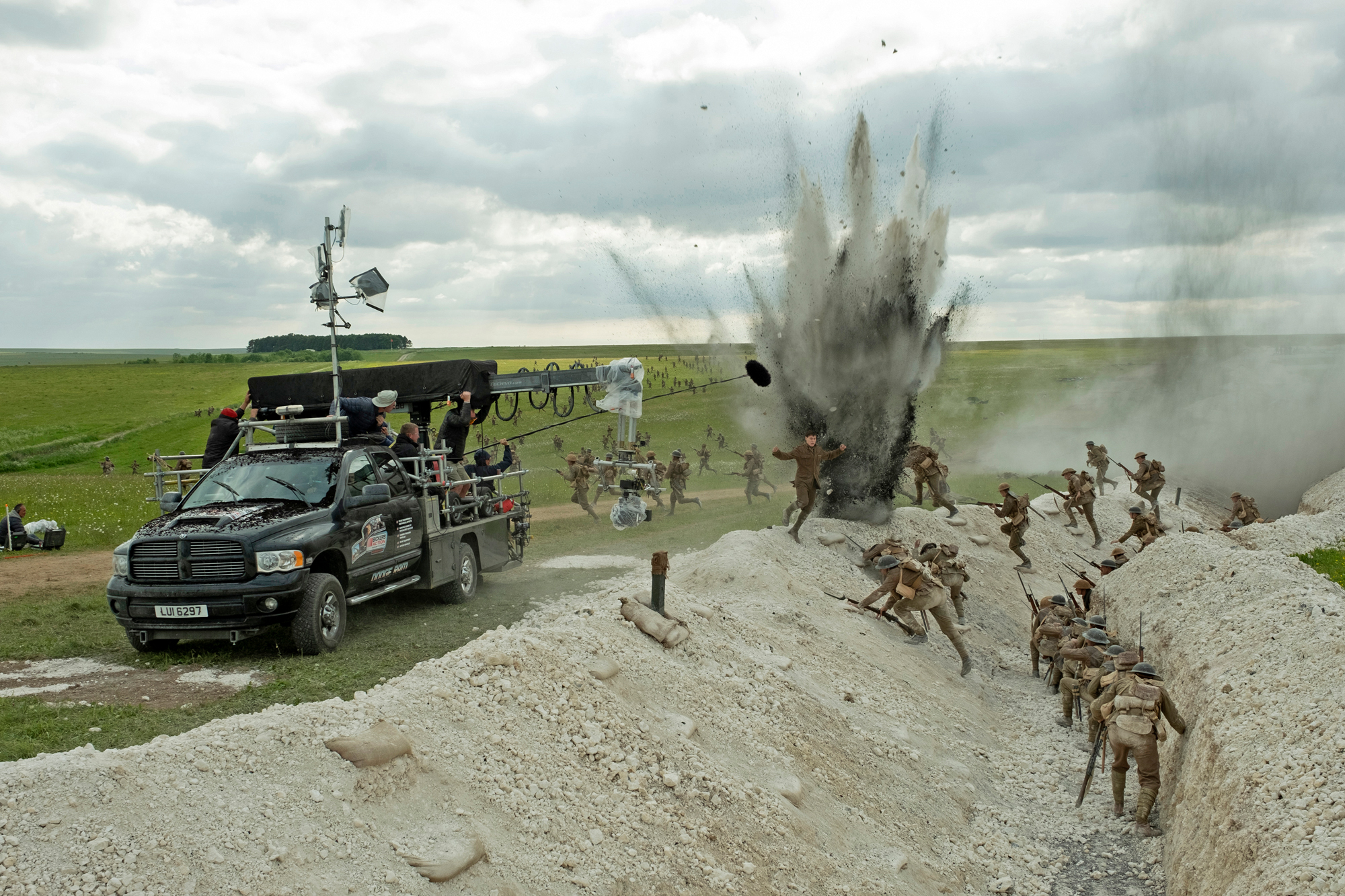
Did you light any of the day exteriors? And did you have to control the light to keep things consistent?
RD: No, I didn't light any of the day exteriors, although I toyed with the idea, and even had some handheld LED rigs made up, but I never used them, as practically it would have been a nonsense. So I just went with shooting as it was - in natural, available light.
What was crucial was that we shot in the right weather conditions. There was no way we could work in high sunlight, as it just would not have been the right look for the film. On a practical level it would not have worked either. We had to shoot under cloud, partly to ensure the images matched shot-to-shot, but also because the story opens in the late afternoon, before going into evening, dusk and nighttime, dawn and, finally, sunrise.
The weather was probably the biggest challenge of the whole shoot, and it was pretty nerve-wracking waiting around, sometimes for many hours, waiting for the right conditions. The first day of the schedule was bright blue sky, with not a cloud in sight, and I wondered what would happen if we were to get that day after day, week after week. But luckily the second day was cloudy, and by the end of the day we were actually ahead of schedule. There were perhaps three or four days when we could not shoot because it was too sunny, but we spent that time rehearsing and getting ourselves ready.
I did wonder about controlling the light, using rags above the trenches, but with over half a mile of trenching to cover it would have been impractical. So I just took the gamble to wait for the weather and was very lucky.
Working closely with Michael Lerman, the first AD, we sometimes would start at different times of day - sometimes late to get the afternoon light, or earlier in the day at other times if I wanted an easterly backlight. In terms of consistency, it was really all about looking at the sky and checking weather apps.

How did you light the spectacular scene in the bombed-out town of Écoust-Saint-Mein?
RD: The set itself took up every inch of the backlot at Shepperton, and the lighting set-up had to work in 360-degrees. We lit the opening section of the sequence with flares floating above the set and the latter part with a huge lighting rig, which gave the effect of the burning church.
In pre-production, we mapped out the lighting using a 8 x 4ft model of the town in the art department. Small LEDs running along different wires arcing over the model showed us where the shadows would fall.
For the shoot, Dominic Tuohy, our SFX supervisor, made up some bright flares, with variable burn times from 22 to 30 seconds. These were hoisted on wires strung from very large cranes and computer controlled so they could go up and down over the set on cue.
The lighting rig, centred in the town square and standing in for the burning church, had a footprint of 60ft x 30ft. It was 50ft high with five tiers of lights - a mix of Maxi Brutes and Dinos - totalling around 2,000 1K bulbs in all. We lit the interiors of the old schoolhouse, where Schofield encounters the young German soldier, from that same light source through the windows.
All of the lights were on dimmers, controlled from the desk by Steve Mathie who adjusted them in tune with the camera moves. Tungsten lights give off that natural orangey, fire-like look when they run at about 20 to 30%. We achieved the same sort of look when we lit Erinmore's bunker earlier on in the film, where the oil lamps were all 500W bulbs, but dimmed down.
Where did you do the DI?
RD: I did the 4K DI with Greg Fisher at Company3 in London. The grade itself was pretty straightforward. We spent most of the time matching shots to make the transitions looked seamless, and making sure the VFX elements integrated properly. I also later worked on the many different SDR/HDR versions of the film, plus an IMAX version too, which I think looks very immersive.
Any final thoughts about having shot 1917?
RD: WWI is a forgotten war, and whilst 1917 is not a history lesson, it was designed to give the audience an accessible experience to what it was like. Every war is futile, but there were heroes within them and surely we have to remember the bravery of those who take part.







